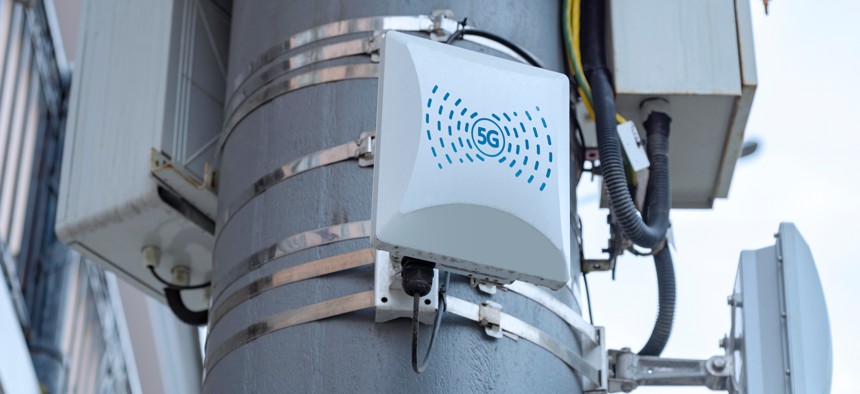
Lisic / Shutterstock
Pentagon to Begin Testing 5G at Four Bases
The project will evaluate the next-gen networks' usefulness for augmented and virtual reality, smart warehouses, and spectrum-sharing.
The Defense Department will soon begin prototyping and testing 5G technology at a handful of its bases, and it’s looking to industry for help.
On Wednesday, the Pentagon announced that in the coming months it will kick off a “large-scale” effort to explore various applications of 5G technology. The program will initially focus on three different 5G use cases and take place across four as-yet-unnamed domestic military installations.
The program will focus on three areas: using 5G to expand the use of augmented and virtual reality systems in training and mission planning, developing smart warehouses to improve logistics, and exploring new strategies for sharing different types of spectrum.
All three research tracks could bring real-world benefits to both the Pentagon and commercial industry, according to Lisa Porter, the department’s deputy undersecretary for research and engineering. Officials plan to add new research opportunities every quarter, as long as funding is made available.
Related podcast:
“This is really part of a bigger strategic push,” Porter said Wednesday on a call with reporters. “We have to acknowledge that together we need to work that out—industry needs access to spectrum, DOD needs access to spectrum. It’s essentially a call to action, saying ‘let’s get serious about figuring out how to do this together.’”
Pentagon will release a draft request for proposal in November to get feedback from industry, and the final solicitation is expected to come out in December.
The department has already consulted the telecom industry on the initiative, Porter said, and officials used their input to inform the program’s initial design.
Related: Pentagon To Explore Potential of 5G — and Its Made-in-China Hazards
Related: The US Can't Out-China China on 5G. We Need a National Strategy.
Related: Why China’s Military Wants to Beat the US to a Next-Gen Cell Network
“We wanted to make sure we understood what the challenges were and how we could collaborate,” Porter said during the call. “This is one of those areas where commercial industry is really leading the charge. The [department] wants to be able to work with industry and … think about how we can influence security, standards and things like that.”




